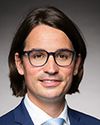There are a number of aspects to this.
Again, as Dr. Smart mentioned, we have all heard of physicians who have trained abroad and now live in Canada. They are Canadian, but they're unable to enter practice. Increasing resources for the practice assessment bodies—the credential bodies that do those assessments in each province—is certainly one path forward, and we would support that.
I think it's important to recognize that Canada must demonstrate a positive working environment for physicians in order to attract them to family medicine. We've broadly outlined a number of concerns around family medicine that we need to address, as well.
Another aspect of this is the concept of ethical recruitment. Certainly, Canadians who have immigrated from abroad and are now in Canada.... I think that's a clear line, and it includes Canadians who have left to study abroad and come back. There's a pool of resources there. We would support increasing training—





